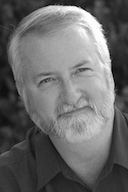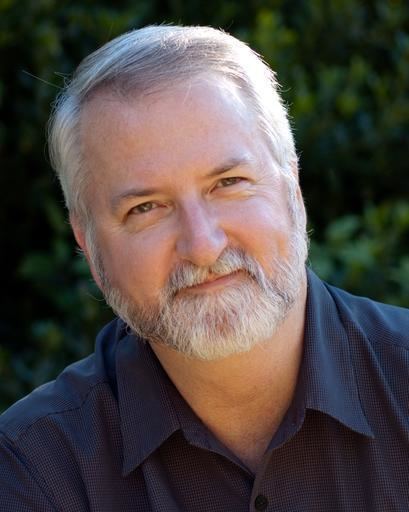Role Physician | Name Eric Rasmussen Spouse(s) Demi | |
 | ||
Children Melissa Elaine Rasmussen, Faith Emily Rasmussen | ||
Ebola responding creating and striving eric rasmussen tedxberkeley
Eric David Rasmussen (born March 17, 1957) is an American physician specializing in methods for global disaster response and their intersection with modern medical ethics. He was selected as the founding CEO of the TED Prize awarded to Larry Brilliant of Google.org in 2006 and in 2013 became the CEO of Infinitum Humanitarian Systems, a Seattle-based international consulting firm specializing in the humanitarian sciences.
Contents
- Ebola responding creating and striving eric rasmussen tedxberkeley
- Early life and education
- Career
- Humanitarian initiatives
- Other
- Awards
- References

Rasmussen spent 25 years on active duty with the US Navy pioneering the specialty of humanitarian medicine inside the military, working to improve healthcare within highly vulnerable populations in war zones and in the aftermath of natural disasters.
Between 1995 and 2014, he worked to develop protocols, tools and techniques used in humanitarian operations. Many of these were initiated during a series of international disaster response demonstrations he directed called Strong Angel held in 2000, 2004, and 2006.
On retiring from the Navy in 2007 he was selected by the Executive Director of Google.org to become the founding CEO of the 2006 TED Prize called InSTEDD, which became a successful NGO, receiving substantial funding from sources such as the Rockefeller Foundation, Google investor John Doerr, and Google's charitable arm Google.org. As of 2017 he remains Chairman of the Board of Directors at InSTEDD.
In 2013 Rasmussen was appointed to serve as CEO of Infinitum Humanitarian Systems (IHS) where, in addition to continued work in disaster informatics and developing engineering techniques for providing clean drinking water in slums, he leads the global disaster response team for the Roddenberry Foundation supported by the Star Trek franchise. In August 2014 he was appointed Core Faculty in both Medicine and Global Grand Challenges at Singularity University within the NASA Ames Research Center.
Early life and education
Rasmussen was born in Sacramento, California, and attended Palm Springs High School in Palm Springs, California. He enlisted in the Navy at age 17 and spent seven years as a Sonar Technician aboard nuclear submarines (USS GATO, SSN-615 and USS SILVERSIDES, SSN-679), before leaving the Navy to attend St. John's College in Santa Fe, New Mexico. He left St. Johns to join the molecular genetics staff at GenBank, a part of Los Alamos National Laboratory.
From Los Alamos, he was selected in 1985 as founding Director of the American University of Les Cayes, which was then being established in Haiti and which is now part of the American University of the Caribbean. While working in Haiti, Rasmussen was accepted to Stanford University, where he completed his undergraduate degree and entered Stanford University School of Medicine.
Career
Rasmussen graduated from Stanford as a Doctor of Medicine (MD) with Research Honors in 1990, then completed a residency in Internal Medicine at the University of Texas Southwestern Medical Center at Dallas (Parkland Hospital). He re-entered the Navy as Chief Resident in Medicine at the Navy Medical Center in Oakland, California after becoming Board-certified in Internal Medicine in 1993. In 1996 he was appointed Fleet Surgeon to the US Navy’s Third Fleet.
After a Navy career that included serving as Chairman of the Department of Medicine at the Naval Hospital near Seattle, Washington, he retired from the Navy in 2007 and accepted an offer from Google.org to become the founding CEO of InSTEDD, a humanitarian informatics NGO founded by Dr. Larry Brilliant from his TED Prize in 2006. Innovating in both technical and social systems, the InSTEDD team worked with the Mekong Basin Disease Surveillance Consortium to create tools that collected, mapped, and disseminated health informatics more rapidly than emerging infections could spread, and every tool has been released as free and open-source. Rasmussen led InSTEDD for three years before shifting in 2010 to Chair of InSTEDD's Board of Directors.
His other appointments include Research Professor in Environmental Security and Global Medicine at San Diego State University and Affiliate Associate Professor of Medicine at the University of Washington School of Public Health. His international appointments include Senior Lecturer at the International Disaster Training Academy Bonn, Germany (Bundesamt für Bevölkerungsschutz und Katastrophenhilfe) and Lecturer at the Academy for Disaster Reduction in Beijing, China.
Humanitarian initiatives
As one of the early proponents of collaborative civil-military operations in disaster response, Rasmussen’s publications include clarifying the optimal role of the military in disaster response, establishing a shared response culture with NGOs for disasters, incorporating survivors in response designs, and leaving beneficial infrastructure like power generation, communications capability, and water purification systems behind. Other specific topics have included:
Other
In addition to his past and current work in humanitarian support, Rasmussen is also:
